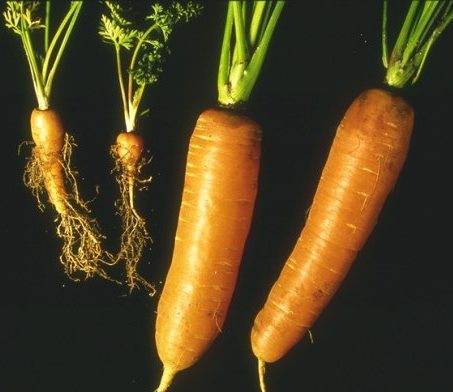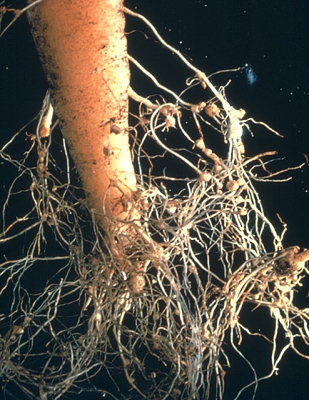
Carrot cyst nematode
| Primefact number | Edition | Published | Author |
|---|---|---|---|
| 1505 | First | Aug 2017 | Plant Biosecurity and Product Integrity |


Carrot cyst nematode (Heterodera carotae) is an exotic plant pest not present in Australia. This nematode is a serious threat to Australia’s vegetable industry.
Carrot cyst nematode (Heterodera carotae) is a plant-parasitic nematode that is a destructive pest of carrots. Young carrot cyst nematodes infest the roots of carrot crops while the adult female nematodes become egg filled cysts.
Notifiable status
Carrot cyst nematode (Heterodera carotae) is a notifiable plant pest in NSW.
All notifiable plant pests and diseases must be reported within 1 working day. You can report notifiable plant pests and diseases by one of the following methods:
- Call the Exotic Plant Pest Hotline 1800 084 881
- Email biosecurity@dpi.nsw.gov.au with a clear photo and your contact details
- Complete an online form
A full list of notifiable plant pests and diseases can be found in Schedule 2 of the NSW Biosecurity Act 2015.
Description
Carrot cyst nematodes are small worms which live on plant roots. Female nematodes look like small, white, lemon-shaped balls sticking out of the root. Male nematodes are hard-to-see tiny, threadlike, transparent worms.
The carrot cyst nematode infested crops appear stunted with reddish tops. Affected plants often appear in small, circular patches. The tap roots are small and unmarketable, with a “bearded look” due to abnormal rootlet growth (Figure 1).
Carrot cyst nematodes cause dark coloured areas or lesions on the roots. Infestations of carrot cyst nematodes may be confirmed by sightings of white female nematodes or brown nematode cysts on the carrot roots (Figure 2).
Damage
Carrot cyst nematode crop losses can range from 20% in fertile soils to 80% in poor, sandy soils.
Lifecycle
Carrot cyst nematodes can complete one or two lifecycles per crop and each female lays up to 100 eggs.
The carrot cyst nematodes have three lifecycle stages: eggs, juveniles and adults. Juvenile nematodes emerge from the eggs after rain or when stimulated by chemical releases from the growing carrot roots. The juvenile females invade the host plant roots and establish feeding sites. Egg hatching and root penetration are suppress-ed at soil temperatures at or above 25°C.
As they grow the female nematodes swell up with eggs and rupture the plant root. When the adult females die their egg-filled bodies harden and become nematode cysts, which change colour from white to brown.
The average egg decline in cysts in soil without host plants is 30-50% per annum. As the egg-filled cysts are resistant to dehydration, the eggs inside them can remain viable for many years.
Host range
Carrot cyst nematode has a narrow host range. Its main plant hosts are cultivated and wild carrots.
Spread
Carrot cyst nematodes are spread from farm-to-farm in cyst infested soil or plant material by farm machinery, footwear, humans, livestock, vehicles, water and wind.
Juvenile nematodes can move through the soil from their eggs to host plants.
Distribution
The carrot cyst nematode is present in Cyprus, the Czech Republic, England, France, Germany, Hungary, India, Ireland, Italy, the Netherlands, Poland, Portugal, the Russian Federation, Scotland, Sweden, Switzerland and the United States of America.
Actions to minimise risks
Put in place biosecurity best practice actions to prevent entry, establishment and spread of pests and diseases:
- practice “Come clean, Go clean”
- ensure all staff and visitors are instructed in and adhere to your business management hygiene requirements
- source seed of a known high health status from reputable suppliers
- monitor your crop regularly
- keep records

